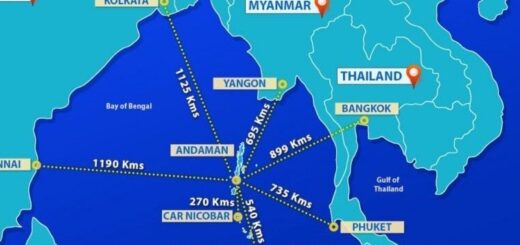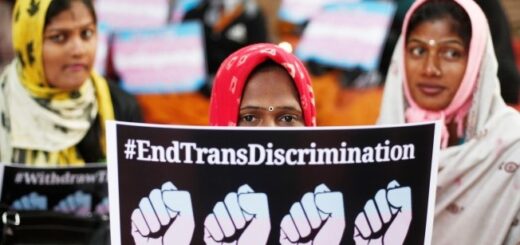National Current Affairs – UPSC/IAS Exams- 11th November 2019
Topic: Health
In News: A recent study published in The Lancet Global Health has observed that 23.5 % of men (15-54 years age group) in India are affected with anaemia.
More on the Topic:
- Population-based studies on anaemia in India have mostly focused on women and children whereas men with the anaemia have received much less attention despite its adverse effect on health and economic productivity.
- An estimated 1.9 billion people (27%) in the world had anaemia in 2013 and 93% of these cases occur in low- and middle-income countries.
Highlights of the Study:
- The study determined the prevalence of anaemia on the scales of mild (18%), moderate (5%) and, severe (0.5%).
- The prevalence of anaemia in men varied widely between states, ranging from 9 % in Manipur (lowest) to 33 % in Bihar (highest).
- Men with less education, less household wealth and those living in rural areas were more likely to have anaemia.
- Higher prevalence has been observed for younger age groups while the lowest prevalence has been observed for the age group of 50-54 years.
- Ideally, men in the group 20-34 years have the lowest probability of having anaemia.
- But, factors such as consuming smokeless tobacco, being underweight, level of urbanisation and household wealth are associated with a higher probability of developing the disease.
- Geographic and sociodemographic patterns of anaemia for men and women in India appear to be similar.
Significance of the Study:
- It can decrease productivity by causing fatigue, creating difficulty in concentrating, and lethargy.
- Although male anaemia does not affect the intergenerational cycle of malnutrition but it may reduce overall work performance and quality of life.
- The existing anaemia control measures in the country are majorly focussed on women and children. The inclusion of the males in the target population will help to eliminate anaemia completely from the country.
Source: Hindu
How global credit ratings work
Topic: Economy
In News: Ratings agency Moody’s has lowered India’s outlook from stable to negative.
More on the Topic:
- Moody’s has lowered India’s credit rating outlook from stable to negative because of what it has assessed as risks to economic growth, prospects of a more entrenched slowdown, weak job creation, and a credit squeeze being faced by Non-Banking Finance Companies. With growth slowing to 5% in the quarter to June this fiscal, and hardly any green shoots visible, most analysts may find it difficult to fault this assessment.
What do these ratings mean?
- Credit ratings agencies rate on a scale the financials and business models of companies, as well as economic management by sovereign governments, after analysing official and other data and interacting with government officials, business leaders, and economists.
- These agencies then rate instruments such as bonds, debentures, commercial papers, deposits, and other debt offerings of companies or governments to help investors make informed decisions.
Significance of the Ratings:
- From a company’s or a government’s perspective, a better rating helps raise funds at a cheaper rate. The agencies do this on a continuous basis, either upgrading or downgrading the instrument based on performance, prospects, or events likely to have an impact on the balance sheet of a company or on the fiscal position of a government or a sub-sovereign entity.
- This could potentially have an impact on companies planning to borrow overseas through bonds or foreign loans, for investors or banks abroad may well seek higher interest rates because of weak prospects.
- This usually weighs on institutional investors such as pension funds, endowment funds of overseas universities, or sovereign wealth funds that manage the wealth of rich countries.
- They have to rejig their investments when there is a lowering of ratings. Firms and many governments that borrow from the international markets too are mindful of rating downgrades.
- In India, the concern could be that after Moody’s upgraded its rating two years ago, when the economy grew two percentage points faster than now, the lowering could signal that a change upwards could be a long way off.
- As the agency put it, compared with two years ago (when it upgraded India’s rating to Baa2 from Baa3), the probability of sustained real GDP growth at or above 8% has significantly diminished.
- It explained that the decision to lower the rating was based on increasing risks that growth will remain materially lower than in the past, leading to a gradual rise in the debt burden from already high levels.
Source: The Hindu
Topic: Miscellaneous
In News: Every year on November 11, India celebrates National Education Day on November 11 to commemorate the birth anniversary of Maulana Abdul Azad, the first Education Minister of India.
More on the Topic:
- He is an independence activist and one of the senior leaders of the Indian National Congress.
- He was awarded the Bharat Ratna, the highest civilian award in 192 for his contributions towards education
- His achievements include
Foundation of University Grants Commission (UGC) that supervises the higher education across the country.
- Establishments of the premier institutes of the country like IITs, IIScs, etc.
- Urudu newspaper called the “Al-Hilal”.
- Foundation of the Lalit Kala Academy, Sangeet Natak Academy and Sahitya Academy to promote the education system of the country.
Source: Hindu
Topic: International Relations
In News: The new political map of India, recently released by the government to account for the bifurcation of Jammu and Kashmir, shows Kalapani as part of Indian territory. Kalapani is a 372-sq km area mapped within Uttarakhand, bordering far-west Nepal and Tibet.
More on the Topic:
- The Nepal government and political parties have protested on the issue. India has clarified that the new map does not revise the existing boundary with Nepal and accurately depicts the sovereign territory of India.
- The Nepal’s Western boundary with India was marked out in the Treaty of Sugauli between the East India Company and Nepal in 1816.
- However,Nepali authorities claim that people living in the low-density area were included in the Census of Nepal until 58 years ago.
- In 2014, Foreign Minister Mahendra Bahadur Pande claimed that the late King Mahendra had “handed over the territory to India”. By some accounts in Nepal, this allegedly took place in the wake of India-China War of 1962.
- A committee formed by the Nepal government to study this claim submitted a report to Prime Minister Oli during his first tenure. It claimed that India had “occupied” an additional 62 sq km land.
- The Prime Ministers of the two countries discussed the issue in 2000, with Atal Bihari Vajpayee assuring Nepal that India would not occupy even an inch of Nepal.
- Apart from Kalapani, another unresolved issue involves a vast area along the Nepal-Uttar Pradesh border.
- During his visit to Nepal in 2014, Prime Minister Modi had said that the Susta and Kalapani issues would be sorted out.
Source: Hindu
Topic: Polity and Governance
In News: A 5 judge bench of Supreme Court led by CJI Ranjan Gogoi delivered the Ayodhya verdict The verdict was unanimous.
More on the Topic:
- The Ayodhya dispute is a political, historical and socio-religious debate in India, centred on a plot of land in the city of Ayodhya, Uttar Pradesh.
- The Babri Masjid was destroyed during a political rally in December 1992.
- Hindus believed that the Babri Masjid, was built in Ayodhya after destroying a Ram Temple that marked the birthplace of the deity.
- The Hindu parties wanted the land to themselves, contending that Lord Ram was born at a spot on which later the central dome of the mosque was built.
- The Muslim parties, believed that the mosque was constructed in 1528 by Mir Baqi, a commander of Babur’s army, without demolishing any place of worship and the space was rightfully theirs.
The verdict:
- The Hindus would get the entire disputed 2.77 acres in Ayodhya where the demolished Babri Masjid once stood.
- Possession of disputed 2.77 acre land will remain with Central government receiver.
- The Muslims will get alternate five acres of land either in the surplus 67 acres acquired in and around the disputed structure by the central government or any other “prominent” place.
- A trust will be formed in 3 months to build a temple on the disputed land. The court held that the Nirmohi Akhara is not the shebait or devotee of the deity Ram Lalla but will get to be a member of the Trust.
Status of Ayodhya:
- Lack of development, despite the town being located just 125 km from the State capital.
- Lack of jobs and investment and Poor infrastructure
- Underdeveloped tourism economy have kept Ayodhya far behind other important Hindu religious centres like Mathura and Varanasi.
- The high-pitched events not only disrupted daily life and business, but also endangered communal harmony in the region.
Source: Hindu
Topic: Government Schemes
In News: The draft code on social security, is being further worked upon after a recent round of public consultations.
More on the Topic:
- The Code on Social Security, 2019 once in place will merge eight exiting labour laws including Employees’ Compensation Act, 1923; Employees‘ State Insurance Act, 1948, Employees‘ Provident Funds and Miscellaneous Provisions Act, 1952; Maternity Benefit Act, 1961; Payment of Gratuity Act, 1972; Cine Workers Welfare Fund Act, 1981; Building and Other Construction Workers Cess Act, 1996 and Unorganized Workers‘ Social Security Act, 2008.
Highlights of the Draft:
- Insurance, PF, life cover for unorganized sector employees: Central Government shall formulate and notify, from time to time, suitable welfare schemes for unorganised workers on matter relating to life and disability cover; health and maternity benefits; old age protection; and any other benefit as may be determined by the central government.
- Corporatization of EPFO and ESIC:The pension, insurance and retirement saving bodies including EPFO and ESIC will be body corporate. Labour minister, labour secretary, the central PF commissioner and Director General of ESIC may not be by default the head of such organizations.
- Benefits for Gig workers:“Central Government may formulate and notify, from time to time, suitable social security schemes for gig workers and platform workers” and such schemes would encompass issues like “life and disability cover”, “health and maternity benefits” , “old age protection” and “any other benefit as may be determined by the Central Government”.
- Maternity Benefit:Subject to the other provisions of this Code, every woman shall be entitled to, and her employer shall be liable for, the payment of maternity benefit at the rate of the average daily wage for the period of her actual absence, that is to say, the period immediately preceding the day of her delivery, and any period immediately following that day.
Model Mains Question: Critically analyse the draft security code.
Source: PIB



















